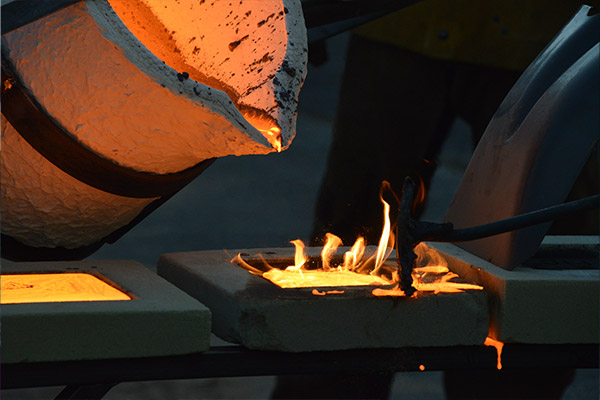Welcome to My Blog! 🌟
Before we dive into the content, I’d love for you to join me on my social media platforms. It’s where I share more insights, engage with our vibrant community, and post regular updates. Here’s how you can stay connected:
📘 Facebook: Connect with me on Facebook
Now, let’s embark on this journey together. I hope you find the content here insightful, engaging, and most importantly, valuable. Let’s explore, learn, and grow together! 🚀
Table of Contents
Introduction

O1 tool steel is one of the most widely used cold work tool steels in manufacturing, metalworking, and fabrication industries. Known for its excellent wear resistance, good dimensional stability, and versatility in various cutting and shaping tools, O1 tool steel has become a trusted material for engineers and technicians. However, despite its popularity and performance, several myths continue to circulate about its properties, limitations, and applications.
This article seeks to debunk the top four myths about O1 tool steel by providing factual insights, technical comparisons, and industry perspectives. Understanding these misconceptions is essential for both experienced professionals and beginners to make informed decisions about using O1 tool steel in their operations.
Myth 1: O1 Tool Steel Is Too Brittle for Industrial Use
A widely circulated belief among less experienced machinists and manufacturers is that this particular steel grade is inherently too brittle for heavy-duty or industrial-scale applications. This notion likely stems from the general characteristics of high-carbon alloys, which are known for their hardness but can become fragile if not handled or treated correctly.
However, this misconception fails to consider the specific engineering behind O1 tool steel. Classified as a cold work tool steel, O1 is oil-hardened—hence the “O” in its name. This hardening method plays a crucial role in enhancing the material’s microstructure. The oil quenching process reduces cooling stresses and promotes the formation of a fine, uniform grain structure. This microstructural uniformity greatly reduces internal stress concentrations that could otherwise lead to cracking or premature failure under load.
When subjected to a properly controlled heat treatment regimen—including preheating, austenitizing, oil quenching, and tempering—O1 tool steel achieves an optimal balance between hardness and toughness. Its hardness can reach up to 65 HRC, yet it retains enough toughness to withstand repeated mechanical stress without fracturing. It’s this fine-tuning through thermal processing that transforms O1 from a potentially brittle material into a dependable industrial workhorse.
In real-world manufacturing environments, O1 tool steel performs reliably in a wide range of cold work applications. These include cutting tools, dies, shear blades, punches, broaches, and precision gauges—anywhere high dimensional accuracy and edge retention are critical. Its toughness allows it to resist cracking or edge degradation during use, particularly in controlled conditions where shock loads are minimized.
The myth of brittleness often arises from a misapplication of the material or a failure to follow proper heat treatment protocols. For instance, skipping the tempering step after hardening can leave the material in a highly stressed martensitic state, making it vulnerable to breakage. Likewise, comparing O1 to more ductile steels like 4140 or mild steel—which are designed for impact resistance or structural use—misses the point that O1 is optimized for precision and wear resistance, not flexibility or deformation.
Furthermore, advancements in heat treatment technologies and improved process controls have only enhanced the reliability of O1 in demanding industrial settings. Many manufacturers now rely on vacuum hardening and sub-zero treatments to maximize performance and minimize internal flaws, making today’s O1 tool steel even more dependable than in decades past.
Key Takeaway:
With correct thermal processing, this tool-grade alloy offers a well-rounded combination of durability and resistance to wear, making it well-suited for numerous demanding tasks in the metalworking and tooling industries.
Myth 2: O1 Tool Steel Cannot Withstand High Temperatures

Another frequent misunderstanding is that this oil-hardened steel lacks the thermal stability required for industrial use, particularly when heat exposure is involved. Critics argue that it degrades quickly under elevated temperatures, thereby limiting its operational scope. While it’s accurate that this material isn’t intended for hot-working environments like forging or die-casting, this doesn’t mean it fails under all thermal conditions.
In truth, it performs admirably in scenarios where moderate heat is a factor. It maintains structural integrity and edge sharpness up to approximately 200°C (392°F). This capability is essential for precision machining or applications involving frictional heat generation, such as certain cutting operations or low-speed dry grinding.
Problems typically occur when users misapply it—using it in high-speed tooling or continuous heat exposure without proper cooling systems, for example. In its correct context—cold work scenarios or environments where the temperature is controlled and intermittent—it excels, delivering reliable and consistent performance.
Practical Note:
Understanding its thermal limits and working within them allows manufacturers to fully leverage its advantages in tasks that demand dimensional accuracy and consistent hardness.
Myth 3: O1 Tool Steel Is Obsolete Compared to Modern Alternatives
With the emergence of advanced metallurgical technologies, including high-speed steels (HSS) and powder metallurgy alloys, some have hastily labeled this traditional material as outdated. This assumption overlooks the many contexts in which it still shines.
Modern alternatives may offer specialized properties such as enhanced corrosion resistance, ultra-high wear resistance, or performance at extreme speeds. However, these features come with increased costs, more complex machining requirements, and specialized heat treatments. In contrast, the alloy in question continues to provide a highly cost-effective solution for a wide range of tooling applications.
Its ease of machining, consistent response to heat treatment, and broad availability make it especially appealing for small-to-mid-sized manufacturers or job shops. In sectors such as woodworking, die making, and general tool fabrication, it remains a dependable and economic choice.
Industry Insight:
Many tool and die manufacturers continue to prefer O1 tool steel for its dependability and efficiency. Its performance-to-cost ratio remains unmatched for numerous applications.
Myth 4: All O1 Tool Steel Grades Are the Same

This myth can lead to significant performance issues. While O1 tool steel is produced to a standard composition, differences in manufacturing processes, impurities, and heat treatment techniques can lead to variations in quality.
Different suppliers may use different melting and refining techniques. Some might adhere strictly to metallurgical standards while others cut corners. Therefore, the myth that all O1 tool steel is the same can be dangerous when high precision and reliability are required.
In practice, factors like inclusion cleanliness, grain size, and carbide distribution can vary significantly between producers—even if the nominal chemical composition meets the standard. These microstructural differences impact everything from grindability to wear resistance and dimensional control during heat treatment.
For instance, toolmakers working on fine-tolerance dies or components requiring repeated sharpening might notice a difference in edge retention or distortion if switching between lower-quality and premium-grade suppliers. Also, poor consistency in steel cleanliness can accelerate premature failure due to microcracking or fatigue under cyclic loads.
Additionally, international standards may differ slightly—O1 equivalents like 1.2510 in Europe or SKS3 in Japan may follow similar base chemistry but diverge subtly in alloying ranges, affecting end-use characteristics. Understanding the provenance and specific processing standards of a given batch is crucial when performance is on the line.
Recommended Practice:
- Always source O1 tool steel from reputable suppliers known for metallurgical consistency.
- Request mill test certificates (MTCs) or compliance documentation that verifies adherence to ASTM or equivalent specifications.
- For critical applications, consider conducting metallurgical evaluations or requesting data on microstructure and hardness uniformity from your supplier.
Comparative Table: O1 Tool Steel vs Other Tool Steels
| Property | O1 Tool Steel | A2 Tool Steel | D2 Tool Steel | M2 Tool Steel |
|---|---|---|---|---|
| Hardness (HRC) | 57-65 | 58-63 | 59-62 | 60-67 |
| Toughness | Moderate | High | Moderate | Low |
| Wear Resistance | Good | Moderate | Excellent | Excellent |
| Heat Treat Stability | Excellent | Good | Moderate | Good |
| Machinability | Good | Moderate | Low | Low |
| Cost Efficiency | High | Moderate | Low | Low |
This comparison demonstrates how O1 tool steel holds its own in terms of hardness, stability, and machinability, making it a preferred choice for many applications that don’t require extreme wear or heat resistance.
Conclusion
Despite the myths, O1 tool steel continues to be a reliable, versatile, and economical option for a wide range of tooling applications. By understanding its true capabilities and limitations, users can avoid costly mistakes and get the best performance out of their tools.
It’s crucial to debunk misinformation and rely on proven data and industry practices when selecting materials. O1 tool steel, with its balanced characteristics, remains relevant and beneficial in modern manufacturing environments.
FAQ
What is O1 tool steel best used for?
O1 tool steel is best used for cold work applications such as cutting tools, dies, punches, and gauges. It performs well where wear resistance and dimensional stability are required.
Can O1 tool steel be welded?
O1 tool steel is not ideal for welding due to its high carbon content. If welding is necessary, preheating and post-weld heat treatment are recommended to reduce the risk of cracking.
How hard can O1 tool steel get?
When properly heat treated, O1 tool steel can reach hardness levels of 57 to 65 HRC.
Is O1 tool steel corrosion resistant?
No, O1 tool steel does not have high corrosion resistance. It should be protected from moisture and corrosive environments to maintain its performance.
Is O1 tool steel easy to machine?
Yes, one of the advantages of O1 tool steel is its good machinability before hardening, making it popular for custom tool fabrication and prototyping.

